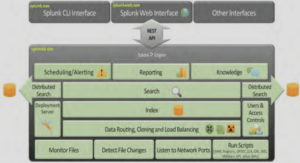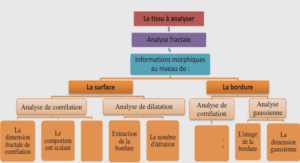Le monde des affa ires est dans un contexte de concurrence accrue. La gestion des coûts devient donc plus en plus importante pour les entreprises, tandis qu e les ressources huma ines sont généralement perçues comme un coût très élevé pour ces entreprises. Dans ce cas, les entreprises so nt susceptibl es de faire appel à différentes formes d’ emploi, te lles que les formes de travail atypique, leur permettant de réduire les coûts relatifs à la ma ind’œuvre. En o utre, le déve loppement de la technologie facilite la communicati on. Cette avancée technologique favorise l’ accès à ces form es d’ emploi dites atypiques. Toutefois, si les régimes de travail atypique sont perçus par les employeurs comme positifs au plan des coûts, il n’est pas certa in qu ‘ ils so ient favorabl es à de bonnes performances. En conséquence, ce mémoire se concentre sur les modalités de travail atypiques chez les travaill eurs membres d ‘équipes de proj et de haute technologie, en s’attardant à des questions pertinentes comme le performance et la motivation dans le cadre de ce type d’arrangement.
WHAT IS A PROJECT TEAM?
From different perspectives, there are different kinds of definitions of proj ect team. From the viewpoint of modern project management, a proj ect team refers to a central management group of a project that is gathered by a group of full-time or part-time membe rs, and these peopl e share the responsibi lity and goal of the project, and report to the proj ect manager (Scott-Young and Samson, 2008).
Concerning the process of project management, a project team involves full-time and part-time personnel that are assigned to work for deliverabl e outcomes and goals of the project (Lewis, 2006). To be spec ifi c, they a ïe responsible for completing tasks in the project; if needed, they have to make more detail ed plans for the assigned tasks; moreover, they need to finish the assigned task within budget, time limit and quality standard ; they need to report to the project manager of the problems, any changes, and the concerns related to project risks and quality; and the team communicate the project status actively and manage ex pected events active ly (Marupin g, Zhang and Venkatesh, 2009). Further, one or more functional departments or organi zati ons can form a project team. An interdepartmental team is formed by members from multipl e departments or organizations, invo lving even more comp li cated management. Besides, in a broad sense, a project team also involves stakeholders of the project, such as project owner, project sponsor, and customers.
CHARACTERISTICS OF PROJECT TEAM
As a specifie type of team, project team has its particular characteristics, sorne of which are like common teams whi le sorne ofwhich are unique. First, a project team has specifie goal(s) (Liu and Farris, 2010). The mission of a project team is to complete a specifie task, realize the set goals of the project and satisfy the needs of the customers. Furthermore, since the needs and wants of the project stakeholders are multifarious, the goals for the project team will also be diversified. Second, a project team is a temporary organization (Liu and Farris, 2010; Maruping et aL, 2009). Un like other teams, a project team has a definite life cycle, determined by the duration of the project. Specificall y, wh en the project is initiated, the project te am is then built; when the project is ended, then the project team is dismissed. Third, project manager is the leader of a project team (Liu and Farris, 2010). As a independent group or organization, project manager assigned to the project team is the absolute leader, directing and monitoring the processes of the team members working toward the project goals. Fourth, a project team puts an even more great emphasis on the spirit of cooperation (Maruping et aL, 2009). As indicated, a project team is a temporary organization formed by staff from different functional departments, which means there is limited time and conditions for them to get fami li ar with each other. In this situation, focusing on the spirit of cooperation is particularly important for the project team. Fifth, it is more flexible for a project team to add or reduce its members (Maruping et aL, 2009). Since a project team is established specifically and temporarily for a project, it is more flexible than other teams. In this case, accordi ng to the particular needs of the project, the proj ect team can add or reduce its members so as to ensure the effective performance of the team in facilitating the success of the project.
HIGH-TECH PROJECT
High-tech project is specific branch in the field of proj ect team study and project management. fn addition to basic features of general proj ect, there exist special properties in high-tech project whi ch relate to atypical work arrangement. This section will show the past research on project, project management and hi gh-tech project.
PROJECT AND PROJECT MANAGEMENT
Proj ect Management, as a newly developed field since 1990s, has already been a major branch of modern management, being more and more important. Through utilizing the knowledge and experience of project management, the work effic iency of project managers can be greatly promoted and improved. So what is Proj ect Management? As indicated by Kerzner (2009), project management is to apply knowledge, ski Ils, too ls and techn iques to various activities in project in order to meet various requirements of the project. Accordin gly, there are four major elements in project management, which include People, Product, Process and Project.
Nowadays, many organizations have increasing interest in proj ect management, for its resülting high efficiency, as weil as its wide range of application in different kinds of projects. So what is a Project? A proj ect is an endeavor implemented during a temporary period for specific objectives such as creating some product, service or result (Kerzner, 2009; Lewis, 2006). When those obj ectives are achieved, or the project is terminated for some reason, the project wi ll be ended. Projects are not limited by size/scale – large or small, or time to complete – long or short. As in every project, there are mainly three kinds of goals, which are Scope goals, Time goals and Cost goals. Scope goals define the work range of the project, name ly what should be done during the project. Time goals refers to the schedul ing of the project, for exampl e, how much time the project has to take to end, as weil as the scheduling of different phases of the project and various project activities. Cost goals means the project budget, namely, what and how much the project can cost. In project management, proj ect managers have the obligation to balance and achieve these goals (Kerzner, 2009).
As indicated by Schmidt (2009), people is a most significant element of project management, especially for a successful project. This element involves two major parts – people management and stakeholders of the project. Managing people is key to the successflll implementation of a project since it determines the work efficiency of the relevant staff on a project. The management of staff is especially important wh en hi ghlypaid staffs or staffs with experience are not available. Managing people is the basic task for project managers. Another important part of project management is the stakeholders, which include senior managers, project managers, practitioners, customers and end users. Among these stakeholders, senior managers are to make decisions and determine major issues of business, which has direct influence on the project. Project managers are to plan specific project activities, and then organize, control and motivate the practitioners to work and achieve planed objectives of the project. Practitioners are to apply technical skills, tools and experience to various project activities, and finally achieve the objectives of the project, such as creating a prodllct or service. Customers are to determine the requirements for the output of the project, and other stakeholders such as the end-users that have interest in the output. End-users are to use or experience the result of the project. Take real estate development as example, the final residents are the end-users of the project of a residential building.
In addition, Process is also an important element of project management, which involves different kinds of activities of a project. It has direct impacts on and will lead to particular outputlresult of the project, and it will also determine the inputs of the project, influencing on the achievement of cost goals of the projects (Atkinson, 1999).
HIGH-TECH PROJECT
The concept of high-tech (high technology) was present in 1970’s. High technology refers to the newest sophisticated technology or cutting-edge technology based on science (Williams, 2002). However, new technology do es not mean high technology, while new technology only represents a relatively new technique form during the developmental process oftechnology.
CHAPITRE 1 INTRODUCTION AU MÉMOIRE |






